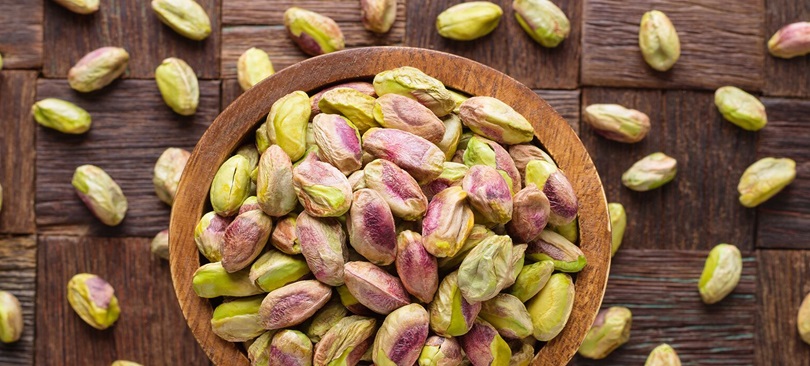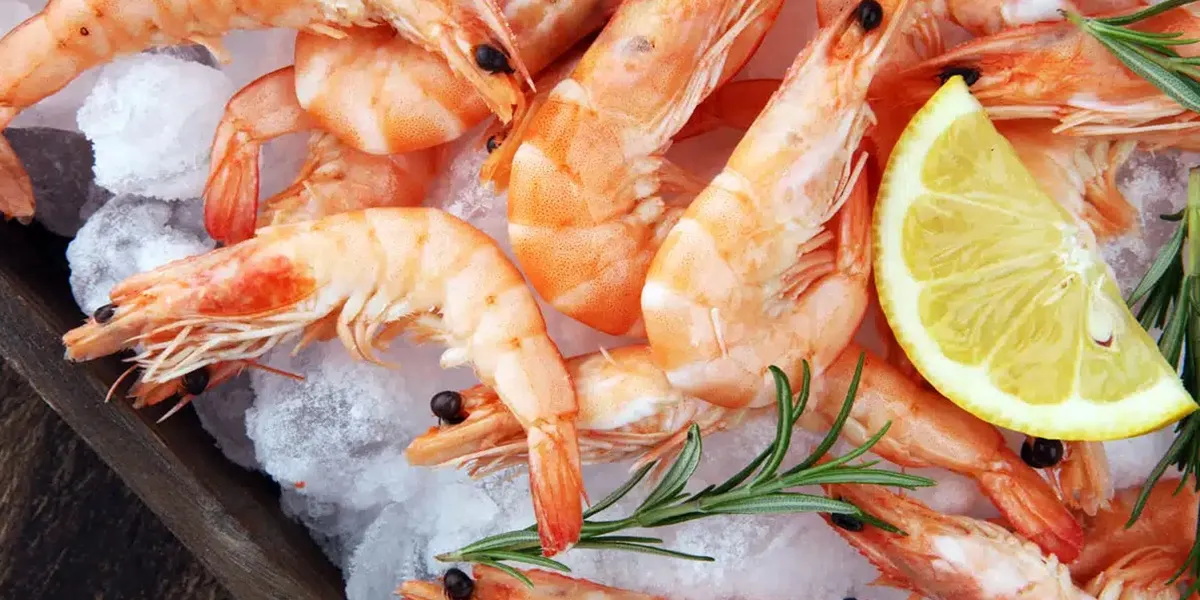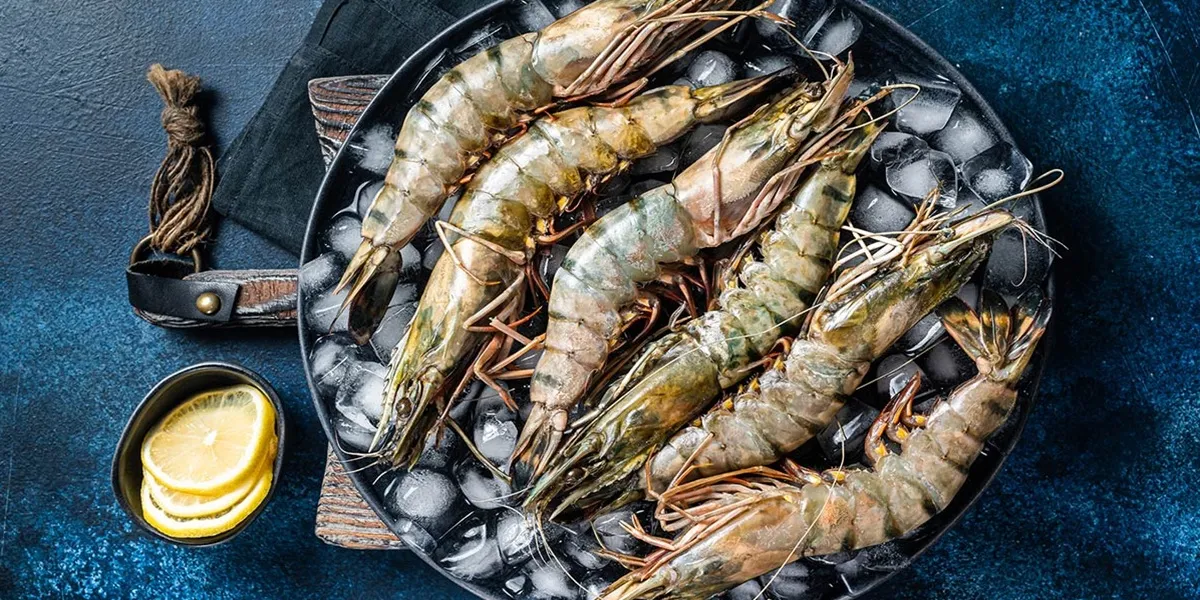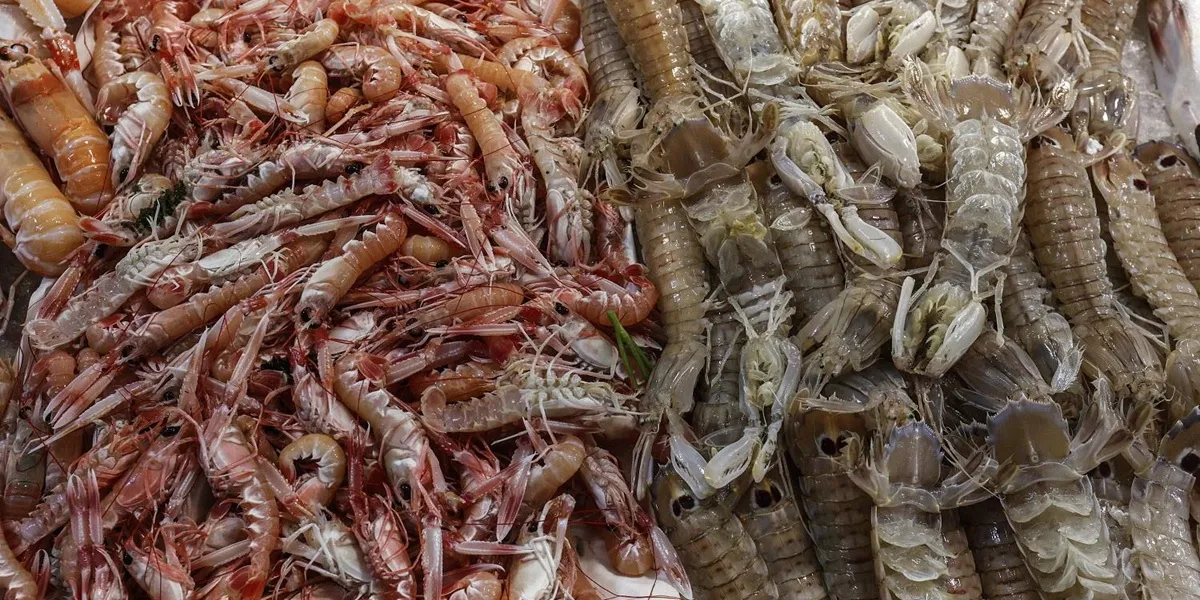Pistachios have long been cherished worldwide for their unique flavor and nutritional benefits. Iran, as one of the leading producers, plays a pivotal role in supplying this esteemed nut to international markets. In 2022, the global pistachio export market surpassed $3 billion, with Iran contributing approximately $355 million, securing its position as the second-largest exporter after the United States.  The superior taste and quality of Iranian pistachios have made them a preferred choice among consumers globally. For businesses and intermediaries, understanding the dynamics of the Iranian pistachio industry is essential to capitalize on its market potential. We invite you to delve deeper into this topic to explore opportunities and insights that can enhance your engagement in this lucrative sector.
Pistachios: A Nut with Ancient Heritage and Modern Demand
Originating from the Middle East, pistachios have been cultivated for thousands of years, with Iran being one of the earliest and most prominent producers. The country’s diverse climate and rich soil contribute to the cultivation of various pistachio varieties, including Fandoghi, Kaleh Ghoochi, Akbari, and Ahmad Aghaei. These varieties are renowned for their distinct flavors, sizes, and shapes, catering to different market preferences. The traditional farming methods, combined with modern agricultural practices, ensure that Iranian pistachios maintain their esteemed quality. For companies and intermediaries, sourcing from Iran offers access to a range of premium pistachio products that meet diverse consumer demands.
Quality and Nutritional Excellence of Iranian Pistachios
Iranian pistachios are celebrated not only for their rich, buttery flavor but also for their impressive nutritional profile. They are an excellent source of protein, healthy fats, fiber, and essential vitamins and minerals such as vitamin B6, thiamine, and potassium. Studies have shown that regular consumption of pistachios can support heart health, aid in weight management, and provide antioxidant benefits. The meticulous harvesting and processing techniques employed in Iran, including proper drying and storage, preserve the nut’s nutritional integrity and extend shelf life. Businesses focusing on health-conscious consumers can leverage the superior quality and health benefits of Iranian pistachios to meet the growing demand for nutritious snacks.
Global Market Dynamics and Opportunities for Iranian Pistachios
The global demand for pistachios has been on an upward trajectory, with the market value exceeding $3 billion in 2022.  Iran holds a significant share of this market, exporting to over 65 countries worldwide.  Major importers include China, India, and European nations such as Germany and Italy. Despite facing challenges like international sanctions and competition from other producers, Iran’s pistachio industry remains resilient. For intermediaries and companies, there are ample opportunities to tap into emerging markets, develop strategic partnerships, and invest in branding initiatives that highlight the unique qualities of Iranian pistachios. Staying abreast of market trends and consumer preferences will be crucial in navigating the competitive landscape and maximizing profitability.
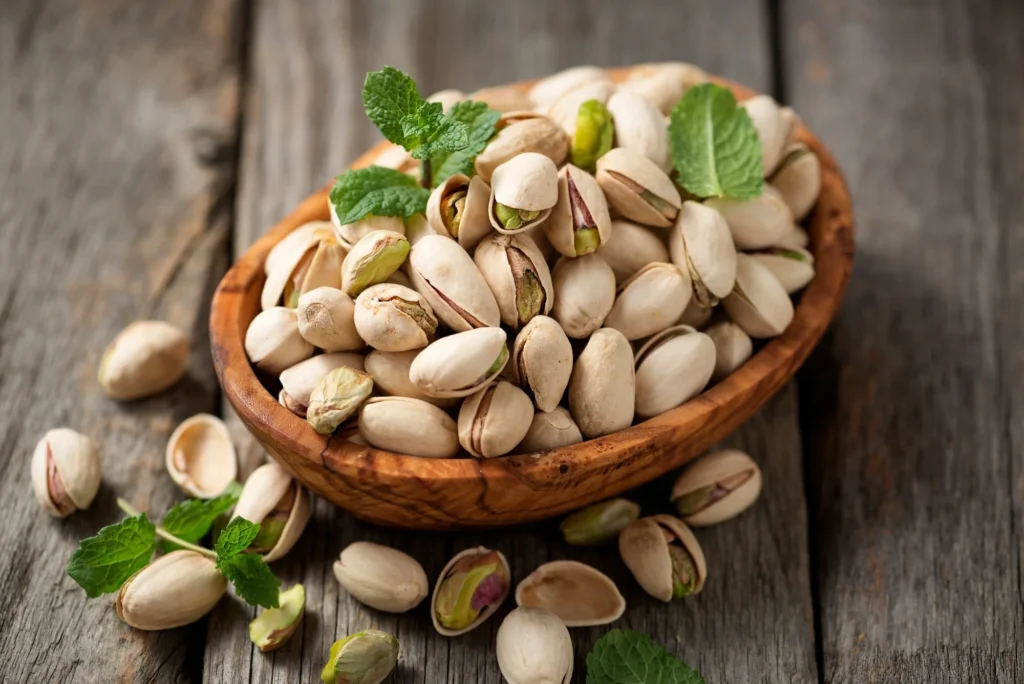
Cultivation Hubs: Key Regions Producing Premium Iranian Pistachios
Iran’s diverse climate and rich soil have fostered the cultivation of pistachios across various regions, each contributing uniquely to the nation’s pistachio industry. The primary provinces known for premium pistachio production include Kerman, Yazd, and Khorasan Razavi.
Kerman province, particularly the city of Rafsanjan, is often referred to as the heartland of Iranian pistachio cultivation. This region’s semi-arid climate and suitable soil conditions create an ideal environment for pistachio orchards. Notably, Kerman accounts for a significant portion of the country’s pistachio output, with vast orchards dedicated to various pistachio varieties.
Yazd province, with its arid climate, also plays a vital role in pistachio production. The region’s long, hot summers and mild winters provide favorable conditions for pistachio trees to thrive. Yazd’s pistachios are renowned for their unique taste and quality, contributing to both domestic consumption and export markets.
Khorasan Razavi, located in northeastern Iran, has emerged as a significant player in the pistachio industry. The province’s diverse climatic zones allow for the cultivation of various pistachio types, each with distinct characteristics. The expansion of pistachio orchards in this area has bolstered Iran’s position in the global pistachio market.
Collectively, these regions not only supply the domestic market but also contribute substantially to Iran’s pistachio exports. The unique climatic conditions and dedicated agricultural practices in these provinces ensure the production of high-quality pistachios that meet international standards. For businesses and intermediaries, understanding the specific attributes of pistachios from these key regions can inform strategic sourcing and marketing decisions, aligning product offerings with consumer preferences in various markets.
Diverse Varieties: Exploring the Spectrum of Iranian Pistachios
Iran’s pistachio industry boasts a rich array of varieties, each with unique characteristics catering to diverse consumer preferences. Among the most prominent types are Fandoghi, Kaleh Ghoochi, Akbari, and Ahmad Aghaei.
Fandoghi, also known as Round or Ohadi pistachio, is the most widely cultivated variety in Iran, comprising approximately 50-60% of the country’s pistachio production. Its small, round shape and rich flavor make it a popular choice in both domestic and international markets. The high yield and adaptability of Fandoghi trees contribute to its prevalence among Iranian pistachio farmers.
Kaleh Ghoochi, or Jumbo pistachio, is notable for its large, round kernels and robust taste. This variety is particularly favored in markets that prefer larger nuts. However, Kaleh Ghoochi trees are sensitive to environmental stressors, requiring meticulous cultivation practices to maintain yield and quality.
Akbari pistachio stands out with its elongated, almond-like shape and is considered one of the most luxurious Iranian varieties. Its large size and exquisite taste command premium prices in the market. The Akbari variety matures later in the season and demands specific climatic conditions, making its cultivation more specialized.
Ahmad Aghaei pistachio is appreciated for its elongated shape and vibrant taste. It matures earlier than other varieties, providing an advantage in markets with early demand. The appealing appearance and flavor profile of Ahmad Aghaei have increased its popularity among consumers and exporters alike.
Understanding the distinct attributes of these varieties enables businesses and intermediaries to tailor their offerings to specific market demands. By selecting the appropriate pistachio types, companies can effectively meet consumer preferences, enhance customer satisfaction, and capitalize on niche markets within the global pistachio industry.
Nutritional Profile: Health Benefits Driving Global Demand
Pistachios are not only prized for their delightful taste but also for their impressive nutritional profile, which has significantly contributed to their rising global demand. A one-ounce (approximately 28 grams) serving of pistachios provides about 159 calories, 5.72 grams of protein, 12.85 grams of fat (primarily monounsaturated and polyunsaturated fats), and 7.7 grams of carbohydrates, including 3 grams of dietary fiber. This nutrient-dense profile makes pistachios a valuable addition to a balanced diet.
Research indicates that regular consumption of pistachios offers numerous health benefits. A study published in the Journal of the American College of Nutrition found that pistachio intake can improve lipid profiles, potentially reducing the risk of cardiovascular diseases. The presence of antioxidants, such as lutein and zeaxanthin, supports eye health by protecting against age-related macular degeneration. Additionally, the combination of protein, fiber, and healthy fats in pistachios promotes satiety, aiding in weight management efforts.
The rich nutrient composition and associated health benefits of pistachios have positioned them as a desirable product in health-conscious markets. For businesses and intermediaries, highlighting these attributes can enhance marketing strategies, appealing to consumers seeking nutritious snack options. Emphasizing the scientific evidence supporting pistachio consumption can further bolster consumer trust and demand, driving growth in both established and emerging markets.
Processing Excellence: Traditional Methods Meeting Modern Standards
Processing Iranian pistachios involves a harmonious blend of time-honored techniques and contemporary standards to ensure both quality and safety. The journey from orchard to market encompasses several critical stages, each contributing to the nut’s final excellence.
Harvesting typically occurs in late summer to early autumn when pistachios reach optimal ripeness. In Iran, traditional hand-picking methods are often employed to minimize damage to the nuts and the trees. This careful approach preserves the integrity of the pistachios, maintaining their premium quality. 
Post-harvest, the outer hulls are promptly removed to prevent staining and potential contamination. In traditional settings, this de-hulling process is performed manually, while modern facilities utilize mechanized hullers to enhance efficiency. Subsequently, the nuts undergo thorough washing to eliminate any residual debris. 
Drying is a pivotal step in the processing chain. Traditionally, pistachios are spread under the sun to reduce moisture content naturally. While this method is still prevalent in many regions, it is susceptible to environmental variables. Conversely, modern processors employ controlled mechanical drying systems, which offer consistency and reduce the risk of mold development. 
Sorting and grading follow drying, where pistachios are categorized based on size, shell integrity, and overall appearance. Advanced facilities utilize optical sorters and electronic grading systems to ensure uniformity, whereas traditional methods rely on manual inspection by experienced workers. 
Roasting and salting are additional processes that enhance flavor and extend shelf life. Traditional roasting methods involve open pans over heat sources, imparting a distinctive taste. Modern techniques utilize industrial roasters with precise temperature controls, ensuring even roasting and meeting health standards.
Packaging is the final stage, crucial for preserving freshness and facilitating transportation. While traditional markets may use bulk sacks, contemporary practices favor vacuum-sealed or nitrogen-flushed packaging to prevent oxidation and contamination.
The integration of traditional methods with modern technology in Iranian pistachio processing not only honors cultural heritage but also aligns with international quality standards. For businesses and intermediaries, understanding this blend of practices is essential for making informed sourcing decisions and meeting the expectations of diverse markets.
Export Dynamics: Navigating the Global Demand for Iranian Pistachios
Iranian pistachios have long been esteemed in international markets for their superior taste and quality. However, the export landscape is influenced by a myriad of factors, including market demand, international regulations, and competition.
In 2023, the global pistachio export market was valued at approximately $3.8 billion, with Iran contributing around $321.2 million, accounting for 8.5% of the total export value. This positions Iran as the second-largest exporter, following the United States, which holds a dominant 62.9% share. 
The primary destinations for Iranian pistachios encompass a diverse range of regions. In the fiscal year 1402 (2023-2024), about 24% of Iran’s pistachio exports were directed to Commonwealth of Independent States (CIS) countries, including Russia, Armenia, and Kazakhstan. East Asian nations, such as China, Japan, and South Korea, accounted for 22%, while the Indian subcontinent, including India and Pakistan, received 21% of the exports. Notably, only 7% of the exports were destined for European Union countries. 
Challenges in the European market have arisen due to stringent aflatoxin regulations. In November 2023, the European Union imposed a ban on Iranian pistachios citing aflatoxin contamination concerns. This development underscores the critical need for rigorous quality control measures to meet international safety standards.
Despite these hurdles, the demand for Iranian pistachios remains robust in various global markets. To navigate the complexities of international trade, Iranian exporters are focusing on enhancing quality assurance protocols, exploring emerging markets, and adapting to evolving consumer preferences. By addressing these factors, Iran aims to sustain and potentially expand its presence in the global pistachio industry.
Quality Assurance: Upholding Standards in International Trade
Ensuring the quality of Iranian pistachios is paramount for maintaining their esteemed reputation in global markets. In recent years, concerns have arisen regarding aflatoxin contamination—a naturally occurring toxin produced by certain fungi—which can compromise food safety and lead to trade restrictions. For instance, in August 2024, reports indicated that two shipments of Iranian pistachios were rejected by the European Union due to aflatoxin levels exceeding permissible limits. 
To address these challenges, Iran has been granted a six-month period by the European Union to implement necessary quality control measures aimed at reducing aflatoxin contamination. This extension underscores the importance of adopting rigorous quality assurance protocols throughout the production and processing stages. Implementing proper harvesting techniques, ensuring adequate drying processes, and maintaining optimal storage conditions are critical steps in minimizing aflatoxin development.
Moreover, regular testing and certification are essential to verify that pistachio consignments meet international safety standards. Collaborating with accredited laboratories for aflatoxin testing and obtaining relevant certifications can enhance the credibility of Iranian pistachios in the eyes of global importers.
For businesses and intermediaries, investing in quality assurance not only ensures compliance with international regulations but also strengthens consumer trust, thereby safeguarding and potentially expanding market share in the competitive global pistachio industry.
Sustainability Initiatives: Ensuring the Future of Pistachio Farming
Sustainable pistachio farming is crucial for the long-term viability of the industry, especially in the face of environmental challenges such as water scarcity and climate change. Iran, being one of the largest producers of pistachios, has recognized the need to adopt sustainable agricultural practices to preserve its pistachio orchards and maintain soil health.
One effective approach involves implementing efficient irrigation systems, such as drip irrigation, which can significantly reduce water usage compared to traditional methods. Additionally, selecting drought-resistant pistachio cultivars and employing soil moisture monitoring technologies can optimize water consumption.
Integrating organic farming practices, including the use of natural fertilizers and biological pest control, not only enhances soil fertility but also reduces the environmental footprint of pistachio cultivation. These methods contribute to the production of high-quality, chemical-free pistachios, appealing to health-conscious consumers.
For companies and intermediaries, supporting and investing in sustainable farming initiatives can lead to a more resilient supply chain. Emphasizing sustainability in marketing strategies can also attract environmentally conscious consumers, thereby enhancing brand reputation and opening new market opportunities.
Market Opportunities: Strategies for Businesses and Intermediaries
The global pistachio market presents numerous opportunities for businesses and intermediaries, driven by increasing consumer demand for healthy snacks and plant-based protein sources. In 2023, the global pistachio export market was valued at approximately $3.8 billion, with Iran contributing around $321.2 million, accounting for 8.5% of the total export value. 
To capitalize on this growing market, companies should focus on diversifying their product offerings. This can include introducing flavored pistachios, pistachio-based spreads, and incorporating pistachios into confectionery products. Innovation in product development can cater to varying consumer tastes and preferences, thereby expanding market reach.
Exploring emerging markets is another strategic approach. For instance, the Indian subcontinent has shown significant interest in Iranian pistachios, with approximately 2,000 tons exported to the region in September 2023.  Understanding regional consumer preferences and establishing strong distribution networks can facilitate successful market entry and growth.
Building strong relationships with local distributors and retailers is essential for market penetration. Collaborative partnerships can enhance market intelligence, streamline supply chains, and improve product accessibility to end consumers.
For intermediaries, offering value-added services such as quality assurance, packaging solutions, and logistics support can differentiate their offerings and attract more clients. Staying informed about international trade regulations and ensuring compliance can also prevent potential trade barriers and foster smoother transactions.
Challenges and Solutions: Overcoming Barriers in the Industry
The Iranian pistachio industry faces several challenges, including international sanctions, competition from other major producers, and quality control issues. In 2023, the United States led the global pistachio export market with exports valued at $2.4 billion, representing 62.9% of the total export value, while Iran held the second position with $321.2 million in exports. 
International sanctions have impacted Iran’s ability to access certain markets and financial systems, complicating trade processes. To mitigate these effects, Iranian exporters can explore alternative markets with fewer trade restrictions and establish barter agreements or use alternative currencies for transactions.
Quality control remains a critical concern, especially regarding aflatoxin contamination. Implementing stringent quality assurance measures, such as regular testing and adherence to international food safety standards, is essential. Collaborating with international certification bodies can enhance the credibility of Iranian pistachios in global markets.
Competition from countries like the United States necessitates a focus on differentiating Iranian pistachios through unique selling points, such as distinct flavor profiles and organic cultivation methods. Investing in marketing campaigns that highlight these attributes can attract discerning consumers and create a loyal customer base.
For businesses and intermediaries, staying informed about global market trends, investing in quality improvements, and adopting flexible trade strategies are key to overcoming these challenges and sustaining growth in the competitive pistachio industry.
Future Outlook: Trends Shaping the Iranian Pistachio Industry
The Iranian pistachio industry stands at a pivotal juncture, influenced by environmental challenges, market dynamics, and technological advancements.
Climate change and increasing instances of drought have significantly impacted pistachio cultivation. To combat these issues, there is a concerted effort to invest in modern irrigation techniques and develop drought-resistant pistachio varieties. These initiatives aim to enhance yield and ensure the sustainability of pistachio farming in arid regions. 
On the economic front, Iran faces stiff competition from other major producers, notably the United States. In 2023, the global pistachio export market was valued at approximately $3.8 billion, with the United States accounting for 62.9% of the total export value, while Iran held an 8.5% share.  To maintain and potentially increase its market share, Iran is focusing on improving product quality, adhering to international safety standards, and exploring new markets.
Technological innovation plays a crucial role in the industry’s future. The adoption of advanced processing equipment and quality control systems ensures that Iranian pistachios meet global standards, thereby enhancing their competitiveness. Additionally, implementing modern agricultural practices can lead to increased efficiency and reduced production costs.
Collaborative efforts between the government and the private sector are essential to address these challenges. By investing in research and development, infrastructure improvements, and comprehensive marketing strategies, Iran aims to solidify its position in the global pistachio market. These initiatives not only promise economic benefits but also contribute to the sustainable development of the agricultural sector.
Conclusion: Embracing the Potential of Iranian Pistachios
Pistachios from Iran offer a blend of rich heritage, superior quality, and nutritional excellence that continues to captivate consumers worldwide. For businesses and intermediaries, engaging with the Iranian pistachio market presents a promising avenue for growth and diversification. By understanding the industry’s dynamics, leveraging the unique attributes of Iranian pistachios, and adopting strategic marketing approaches, stakeholders can position themselves advantageously in the global market. We encourage you to explore the opportunities within this sector and consider integrating Iranian pistachios into your product offerings to meet the evolving demands of consumers.

